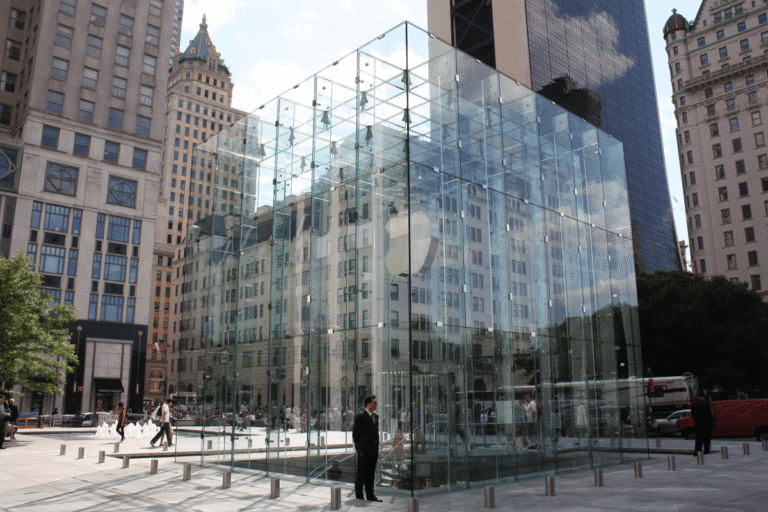🕑 Reading time: 1 minute

Structural glass skeletons represent a groundbreaking advancement in architectural engineering, transforming glass from a purely aesthetic feature into a primary load-bearing material. These systems leverage high-strength laminated, tempered, and chemically strengthened glass to support structural loads—making glass beams, columns, and walls not just decorative, but essential to the building’s integrity.
By integrating advanced glass chemistry, precision engineering, and innovative connection systems, architects and engineers are creating transparent frameworks that defy conventional construction norms. This enables early incorporation of structural glass into building systems, maximizing both performance and design impact.
As demand for transparency and openness in design continues to grow, structural glass skeletons are emerging as a transformative solution, offering unmatched clarity without compromising strength.
What Are Structural Glass Skeletons?
Unlike traditional glazing, structural glass skeletons use engineered glass components—such as laminated glass beams and columns—to bear building loads, including floors, roofs, and even entire upper stories. These elements are capable of carrying compressive, tensile, and flexural forces, all while providing full visual transparency.
Systems incorporate:
- Laminated assemblies with high-strength interlayers (PVB, SGP, EVA)
- Precision-designed connections to avoid stress concentrations
- Composite glass-steel hybrids for optimal load-bearing transparency
- Post-tensioning techniques to enhance load resilience
- Redundant load paths to mitigate brittleness
CodeComply.AI further streamlines code compliance and permit workflows, helping projects meet stringent building codes while accelerating approval timelines.
Performance benchmarks show structural glass elements sustaining up to 15 MPa in compression, with span capabilities reaching 8–12 meters without intermediate supports. In many cases, glass-based systems rival steel frame construction in strength, while reducing total structural weight by up to 30%.
How Do Structural Glass Skeletons Work?
Structural glass frameworks function through a careful combination of material science and structural mechanics:
- Laminated Glass: Multiple glass layers bonded with interlayers maintain strength even after cracking.
- Engineered Connections: Mechanical or adhesive systems distribute forces to prevent failure at connection points.
- Post-Tensioning: Controlled stress improves strength and crack resistance under load.
- Hybrid Elements: Steel or titanium elements are integrated to complement the glass and provide fail-safe redundancy.
- Dynamic Load Handling: Laminated layers provide inherent damping, essential in wind and seismic zones
Real-World Applications
Crystal Houses (Amsterdam)
A transparent retail structure where glass bricks form the load-bearing façade. Over 7,000 UV-bonded bricks carry up to 42 tons of vertical load, supporting three floors with total optical clarity.
Apple Store Cube (New York)
This iconic 32-foot cube uses 1.5-ton glass panels as structural walls and roof supports, withstanding both gravity and wind loads of up to 150 mph.
Louvre Pyramid (Paris)
A geodesic network of laminated glass panels creates a fully transparent entrance while withstanding snow and wind loads through shared triangular support.
Technical Advantages
- Full visual transparency with structural integrity
- Enhanced natural light penetration
- Lighter structural systems than steel
- Dual-purpose materials: aesthetic + load-bearing
- Enables bold, minimalist architecture
Engineering Challenges
- Brittle failure behavior requires detailed safety engineering
- Complex manufacturing, transport, and installation processes
- High precision needed for connections and tolerances
- Substantial up-front costs and specialized labor
- Requires advanced modeling for seismic and wind loads
FAQs
- Is structural glass strong enough to support entire buildings?
Yes. For example, the Ferrari Museum in Italy uses 24-meter laminated glass beams to support 180-ton roof loads—equivalent to 30 suspended cars. - What if the glass cracks?
Systems use multi-layer redundancy and concealed backup frames. If outer layers fail, inner ones carry the load. Projects like Torre Cube in Mexico demonstrate successful deployment of these safety features. - How are glass elements connected?
Through adhesive systems (with strengths up to 25 MPa), titanium fittings, or custom mechanical fasteners that spread force loads to prevent point failures. - Can structural glass handle earthquakes or wind?
Yes. The Tokyo Glass Tower uses tuned mass dampers and laminated glass damping to pass full-scale seismic tests. Properly designed systems resist accelerations from major earthquakes. - What’s the most ambitious example?
The Elbphilharmonie in Hamburg features structural glass panels forming a 26-meter cantilevered roof. Each glass panel carries 89 kN/m², serving as both envelope and structure—something impossible with conventional materials.
[ad_2]
Source link


